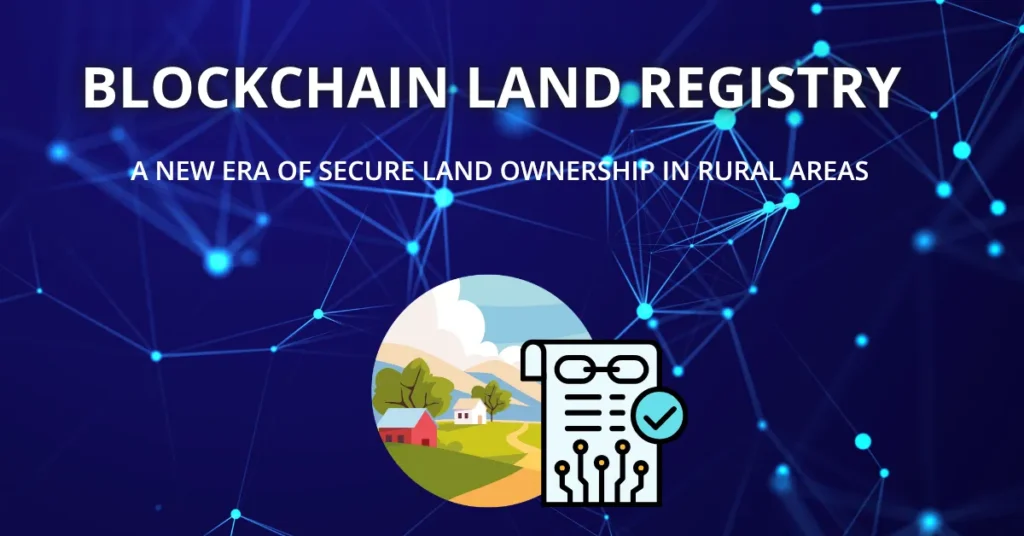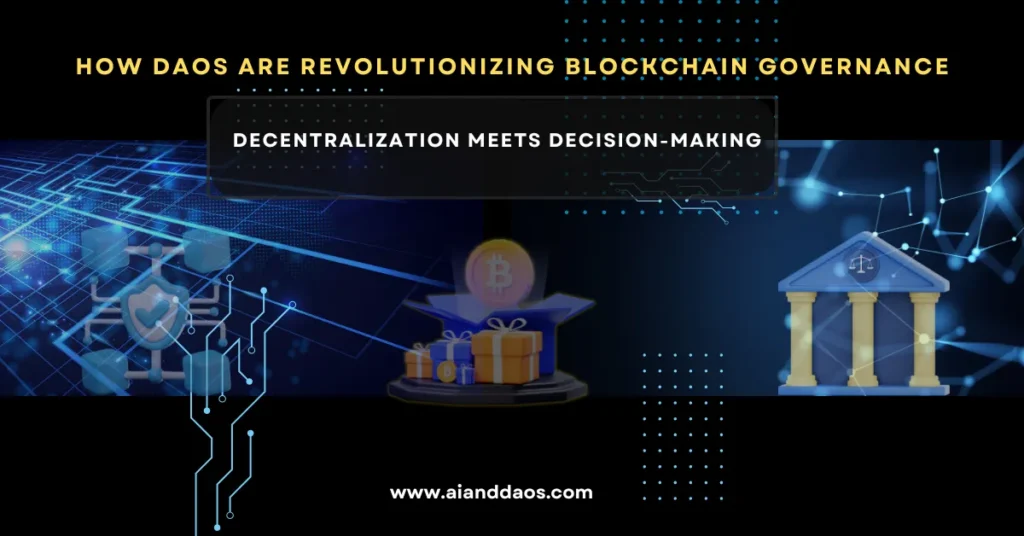Why Land Ownership Still Matters
When a land dispute starts, proof of ownership can mean everything.
Yet in many parts of the world, that proof is weak or missing entirely. Rural communities still rely on paper documents that are easily lost, forged, or contested.
Without reliable records, land title disputes are common, and families face uncertainty over property rights and inheritance.
A blockchain land registry offers a modern alternative. By using decentralized, tamper-proof technology, it creates secure land records that can’t be altered or erased.
This shift toward digital ownership can reduce fraud, speed up verification, and provide long-term protection for landholders.
Challenges remain—such as cost, infrastructure, and legal alignment—but the potential is clear. Pilot programs around the world are proving that blockchain may be the next step in building trustworthy, transparent land systems.
How Blockchain Technology in Agriculture Works
The Problem with Traditional Land Registries
Traditional land registries in many parts of the world still depend on outdated, manual record-keeping. These systems are often fragile—built on paper documents that are easily lost, damaged, or manipulated. For many, especially in rural or underserved areas, there’s simply no reliable land record system in place.
Without access to verified land documentation, individuals can’t prove they legally own the property they live or work on. This leaves room for title disputes, land grabbing, and even forced evictions.
Corruption also plays a role. Bribes, falsified records, and missing files are common issues in centralized offices where oversight is weak. For communities already living on the edge, these risks make secure land rights feel out of reach.
The result is a system that slows development, blocks investment, and fails to protect the very people it’s supposed to serve. Without trustworthy property ownership records, the cycle of land insecurity continues.
What Is a Blockchain Land Registry?
A blockchain land registry is a new way to record who owns land—but instead of using paper files or centralized databases, everything is stored digitally on the blockchain.
What makes this different from a regular digital database is how the system works. It’s decentralized, meaning the data isn’t controlled by one single authority. Instead, it’s shared across a network of computers, which helps prevent fraud, tampering, or accidental loss.
Each land record is saved as part of a growing chain of information. These records include key details like ownership history, timestamps, and are secured using public and private keys. This creates a digital trail that’s extremely difficult to fake or erase.
Because the blockchain is transparent and permanent, anyone with access can verify who owns a property and when it was transferred. That level of trust and accountability is what makes blockchain land registries so promising—especially in places where land rights are often unclear.
How Blockchain Secures Land Titles
It all starts with mapping the land. Surveyors measure and define the exact borders of a property, which helps avoid confusion or overlap with neighboring plots. Getting these details right is the foundation for everything that follows.
Once the land is clearly mapped, ownership needs to be confirmed. This could mean checking old documents, resolving any disputes, and making sure the person claiming the land is legally recognized as the owner. In many parts of the world, this step also involves digitizing paper records that were never stored properly.
After ownership is verified, the details are recorded on the blockchain. This creates a secure digital record that can’t be easily changed, deleted, or tampered with. Every action—like a sale or transfer—is time-stamped and stored forever. It’s transparent and open to everyone who needs access.
Some systems also use smart contracts to automate parts of the process. For example, if someone pays for a property, the title can transfer instantly without needing a lawyer or middleman. It’s faster, safer, and builds real trust into land ownership.
Case Studies: Where It’s Already Working
In Honduras, land disputes were part of daily life. People lived on properties passed down through generations, but without official records, it was easy for someone to show up with forged papers and claim what wasn’t theirs. That’s exactly what happened to Carlos, a small farmer who nearly lost his land because the government registry couldn’t prove he owned it. Things started to change when a new pilot project introduced a blockchain land registry—a system where ownership records couldn’t be edited, lost, or corrupted. For the first time, Carlos had something solid to stand on.
Thousands of miles away in Andhra Pradesh, India, Priya faced a different struggle. She inherited a small plot of land from her grandfather, but it took months of paperwork, long lines, and several trips to local offices just to update the title. When the state began digitizing land records using blockchain, the difference was dramatic. The process became faster, clearer, and far less dependent on outdated paper files. She could now access her land data securely from home—without worrying about someone “losing” it along the way.
Then there’s Emmanuel in Ghana. He didn’t have Wi-Fi, but he had a smartphone and patchy mobile service—enough to connect with a local blockchain initiative. Through a simple mobile app, Emmanuel registered his farmland, backed by digital coordinates and timestamped proof of ownership. In a place where many still rely on verbal agreements and memory, blockchain gave him peace of mind—and something to pass on to his children.
These stories are early steps, but they show what’s possible. From Latin America to South Asia to rural Africa, blockchain land registries are quietly reshaping how people protect the land they call home.
Blockchain for Smallholder Farmers: Game-Changer
Benefits of Blockchain Land Registry
A blockchain land registry makes land ownership clearer, safer, and more accessible for everyone. One major benefit is that it helps prevent fraud and bribery. Since all records are locked in and can’t be secretly changed, it becomes much harder for someone to forge documents or steal land.
It also gives people proof of ownership they can count on. For many landowners—especially in rural areas—just having a trusted, digital title means they finally feel secure. It gives them power, confidence, and the ability to stand up for their rights.
Transfers become easier, too. Whether you’re passing land to your children or selling it to someone else, blockchain speeds up inheritance and property deals without the usual delays or red tape.
And if someone wants to take out a loan, having a verified land title helps. Banks feel more comfortable lending when they know exactly who owns the land. It’s a win-win: more security for the system, more opportunity for the owner.
Challenges to Adoption
Even though the idea of a blockchain land registry sounds promising, bringing it to life—especially in developing regions—comes with real challenges.
One major issue is the lack of digital infrastructure in rural areas. Without reliable internet or access to smartphones, many communities simply can’t participate in a digital property system, no matter how secure or advanced it is.
Another roadblock is resistance from traditional intermediaries—like local officials or land brokers—who may feel threatened by a system that removes their control. In some areas, these middlemen benefit from bribes or paperwork confusion, so they’re unlikely to support a tool that increases land title transparency.
Then there’s the question of legal recognition. While blockchain can provide trusted land title verification, not all governments have updated their legal frameworks to accept digital records as official proof of land ownership rights. Without clear support from the law, people may still face problems defending their property—even with blockchain on their side.
So while the technology is ready, true adoption depends on building access, trust, and policy from the ground up.
The Future: Smarter Land Systems
The future of land ownership isn’t just digital—it’s intelligent. As blockchain land registries become more common, the next step is making these systems smarter and more connected.
One way this is already happening is through the integration of AI. Once ownership records are securely stored on the blockchain, AI in land management can help governments and communities analyze patterns—like spotting fraud risks or predicting land value changes. It adds another layer of insight that helps prevent mistakes and protect rights.
Then there’s GIS mapping, which brings land data to life. Instead of dealing with flat paper maps or confusing spreadsheets, smart land systems use geospatial tools to show property boundaries, land use, and terrain in real time. It’s especially helpful for planning roads, housing, or farmland—and resolving disputes quickly.
This technology also supports climate-smart land planning. AI and GIS can help identify flood zones, recommend sustainable land use, or guide farmers toward better crop management. With accurate, blockchain-backed data, decisions become clearer and more responsible.
And as more countries adopt these systems, we may soon see interoperable property records that work across regions. Whether you’re transferring land in Kenya or verifying ownership in India, the process could one day be just as secure—and just as simple—as sending an email.
The future of land isn’t just about owning it—it’s about using it wisely. Blockchain is just the beginning.
Blockchain Land Registry: A Digital Path to Land Justice
Land is more than just a piece of property—it’s security, identity, and legacy. But in many parts of the world, land title security is still fragile. Paper documents can be lost or faked, and families are often left vulnerable to disputes or corruption. That’s why the rise of blockchain land systems matters so deeply.
By creating tamper-proof digital land ownership records, blockchain builds transparency and trust. It reduces fraud, minimizes conflict, and protects property rights—especially for rural communities who’ve historically had the least protection.
Still, technology alone won’t solve everything. To unlock the full promise of land governance innovation, we need awareness, infrastructure, and cooperation. People need to understand these tools. Governments and developers must invest in making them accessible, reliable, and backed by clear policies.
If we get this right, blockchain-based land registries could be more than a technical fix—they could lay the foundation for fair, transparent, and lasting land justice in the digital age.
Blockchain Land Registry: Key Questions Answered
1. How does a blockchain land registry prevent fraud?
Blockchain creates an immutable record of land transactions. Once a title is recorded, it cannot be changed without consensus, reducing the risk of tampering or duplicate claims.
2. Is blockchain land registration legal in all countries?
No, legal recognition varies. Some countries like India and Honduras are piloting blockchain land systems, but most are still developing laws to support digital property records.
3. Can rural communities actually use blockchain land registries?
Yes—but only with the right infrastructure. Many projects combine blockchain with mobile tools and local outreach to make the technology accessible to underserved areas.
4. What’s the difference between digital databases and blockchain registries?
Digital databases are centralized and can be edited by insiders. Blockchain, on the other hand, is decentralized and tamper-proof, making it more secure for land ownership.
5. What other technologies support smart land systems?
Technologies like AI, GIS mapping, and mobile platforms often work alongside blockchain to improve land-use planning, climate resilience, and ownership verification.


